The passing of Peter Wolfenden and the harness racing story of Cardigan Bay stirred up a few memories for me. First let me say that Cardigan Bay was way before my time although I do remember his appearance on the Ed Sullivan Show in 1968.
As most teenagers did that night, I had tuned in the watch The Beach Boys as back then I was just another observer going to the races at Bay State Raceway. Cardigan Bay the racehorse was as far removed from me as New Zealand was from East Podunk, Massachusetts.
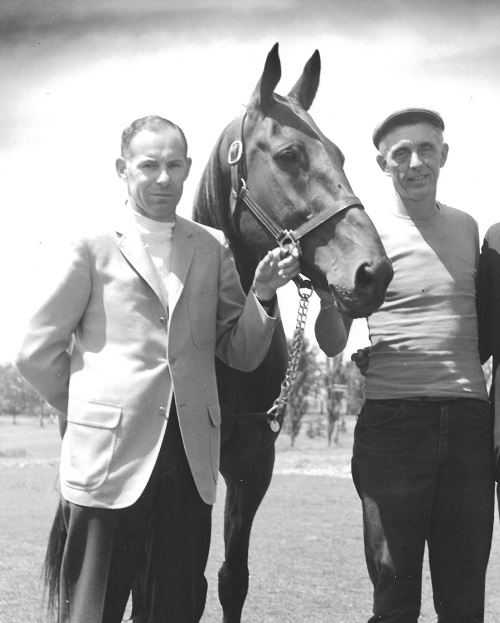
Cardigan Bay had been led up the Red Carpet and into the now-named Ed Sullivan Theater under the glare of TV cameras and flashbulbs popping and Ed introduced the recently retired 12-year-old as “the first harness horse to win a million dollars… right here, on our stage.”
The world-class gelding took it all as nothing seemed to faze him. His trainer/driver 41-year-old Stanley Dancer nodded his acknowledgement and a somber middle-aged man stood by Cardy’s head, he himself just taking it all in.
The quiet 43-year-old man was Joe Wideman, Cardy’s caretaker since his arrival in the States in 1964. And never in my wildest plans did I think that, in less than ten years, I would be working alongside him.
Starting in 1950 Stanley and his extremely capable second trainer Dick Baker (1904-1989) produced a string of horses that made headlines such as the 1961 Little Brown Jug winner Henry T Adios who would go on to be the richest horse of all-time with $706,883 followed by a back-to-back Jug winner with Lehigh Hanover; their marquee trotter in the early 1960s was International winner Su Mac Lad, and with earnings of $885,095, he too would then retire as the richest horse of all time.
Cardy arrived in the States in 1964 and Wideman was chosen from a group of Dancer’s caretakers that were deemed by many as “the best in the business” as a lot of them came from careers with Sep Palin, Doc Parshall, Saunders Russell, Earl Avery etcetera. Wideman himself had stints with Clint Hodgins and Joe O’Brien in his earlier years.
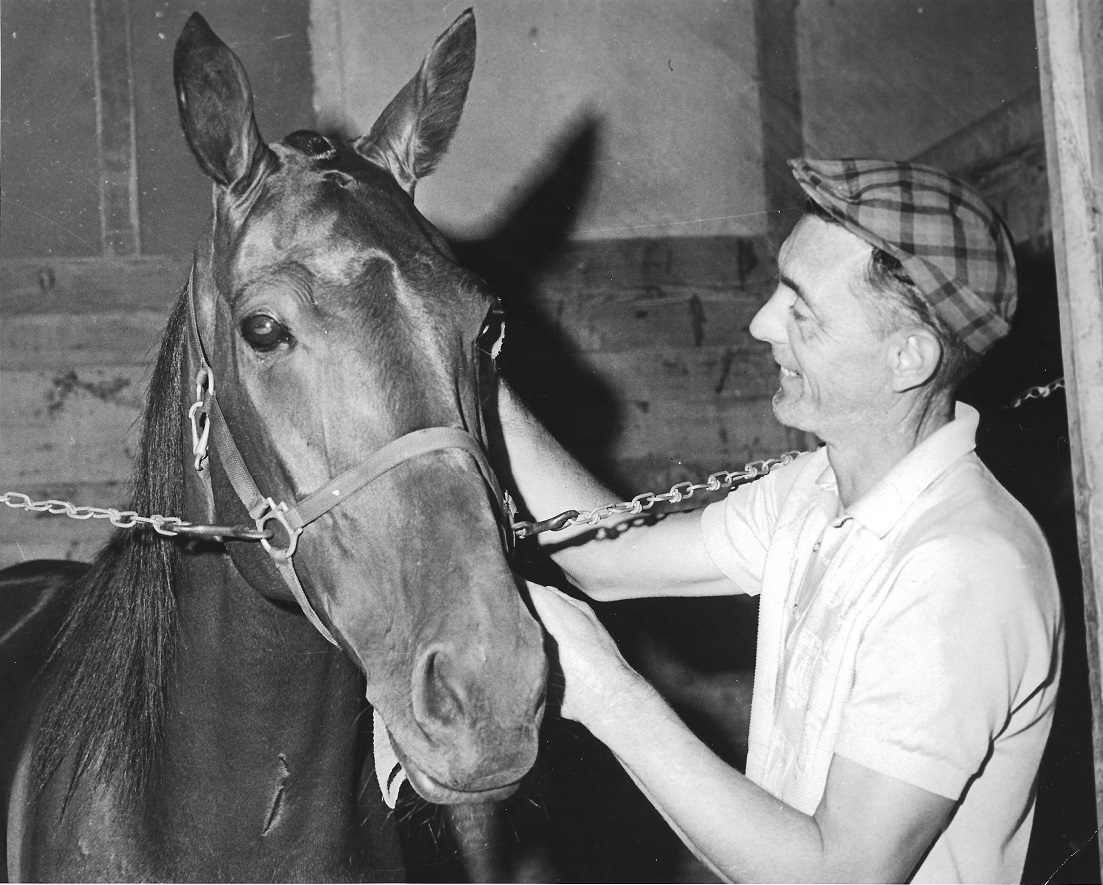
So from 1964 until his retirement that autumn of 1968 Cardy and Joe did battle with the top Free-For-Aller’s the sport had to offer including three legendary matchups with the three-time Horse of the Year Bret Hanover who, when he retired in 1966, was the winningest money horse of all time with $922,616.
Cardigan Bay would keep on trucking into 1968 needing $85,000 to eclipse the coveted million-dollar mark and as Stanley put it “he was racing on heart alone” that year. Joe would later say “that last $1,000 was the toughest thousand dollars any horse as ever earned” what with his problems and the competition he faced. His last race was a winning one at Freehold Raceway as the final tally of money on his card was $1,000,870.
Joe took it all in stride and if there was any man suited for the task ahead, he was definitely the man. He was a very stoic man but he would smile and joke once he got to know you. Brooklyn Eddie Schiffer, who worked alongside Joe for over a year in the mid-seventies, agreed.
“He never talked too much about himself, but he’d answer your questions about horses.” To us rookies we could learn a lot more by keeping quiet and observing. Joe got a bit more morose when his gal pal decided to go back home that Spring.
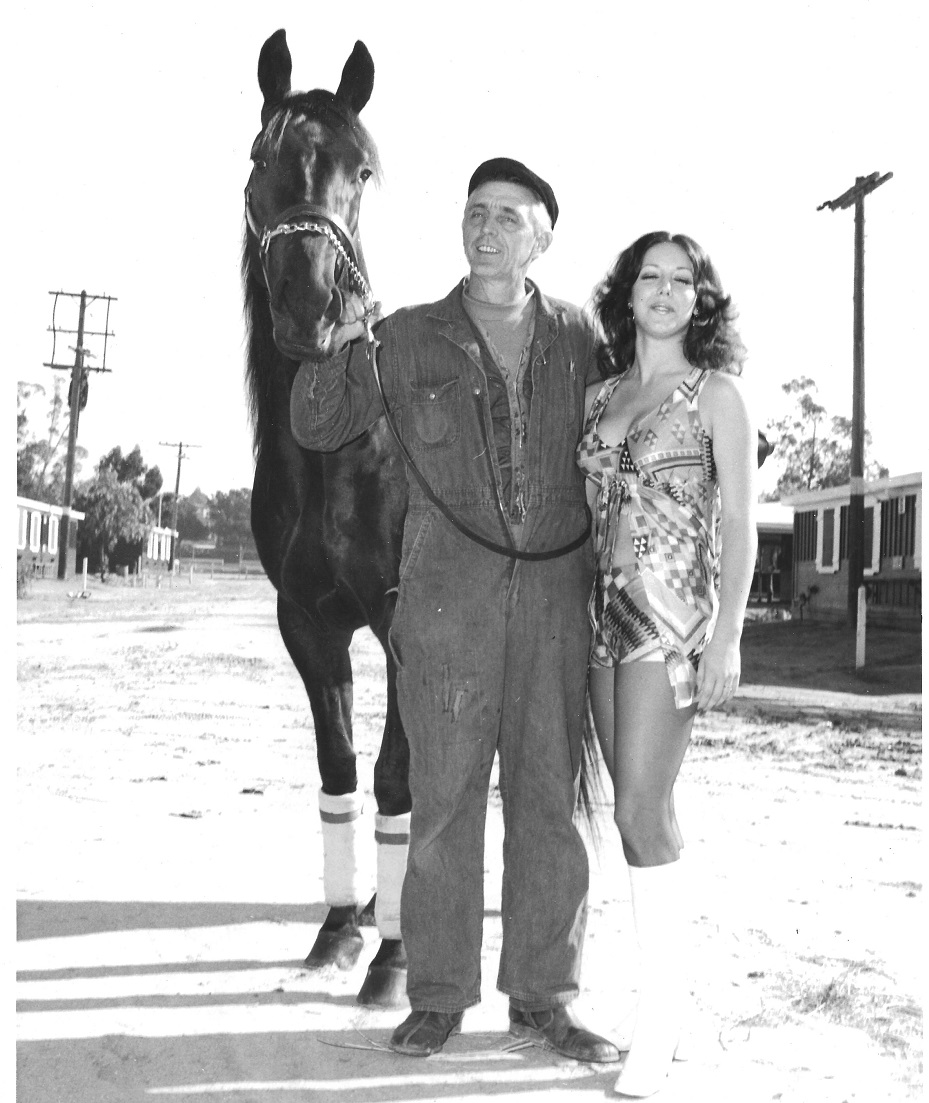
“Her name was Karen,” offered Eddie. “I think she was from Michigan.”
She was a few years younger than Joe and she wanted to go on the road and see the world. Joe had already seen it. He had spent the majority of his career traveling and now had a comfortable and neat double-wide trailer, all paid for, in a nice neighborhood where he could relax at night.
So, they parted ways. She took off for the Roaring Grand and Joe stayed local in New Egypt caring for New Jersey Sire Stake horses, one of which was Eroica. As a two-year-old in 1976 the son of Eric B had 8 wins and 7 seconds in 15 starts for Joe… to the manner born.
As I asked Eddie about Joe, I realized how little did we know about one of the best caretakers of all time. So, I did some research.
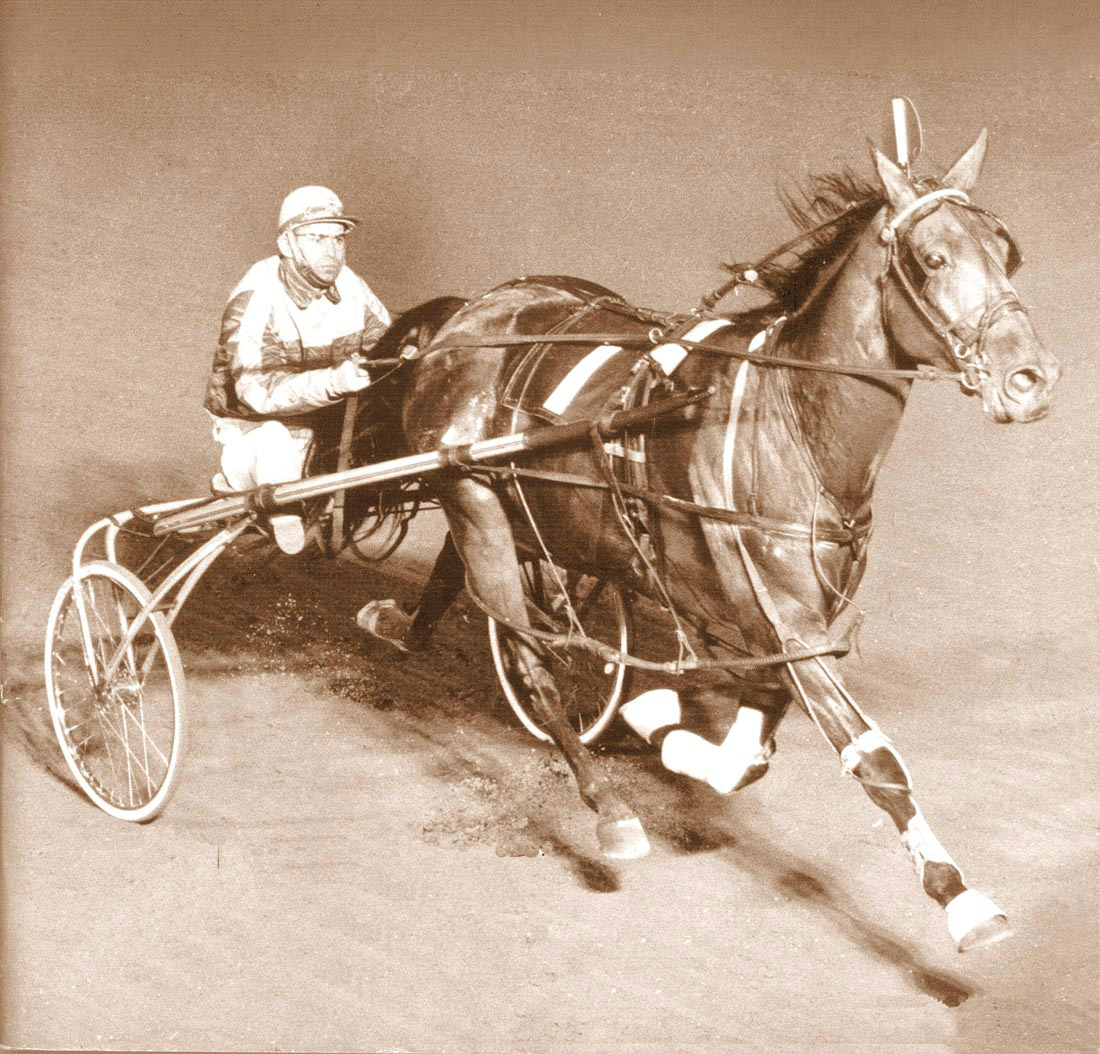
Born in Wilkes-Barre, Pennsylvania in 1925, he would work at all the jobs in the family-owned meat market as well, methinks, as their delivery driver on a horse-drawn wagon. Just after he turned 18, he enlisted in the Navy in September of 1943 at a time WWII was not going too well for the Allies. He would serve 29 months – including 14 months overseas in the European waters – before his honorable discharge as a Seaman 1st Class in May of 1946.
As with most of “the Greatest Generation” he came back home, picked up the pieces, and went back to work.
His father Henry would retire from the store at the age of 50 and would campaign a small stable of horses at the local Fairs listing his occupation – according to the 1950 census – as a “groomer.” Ironically the 25-year-old Joe was described as “new help.”
He hooked up with Clint Hodgins and by 1955 he was working for Joe O’Brien. A photo of the first trotting Triple Crown Winner Scott Frost shows the 3-year-old Champion being held by his caretaker Don Beales and if you study the print closer you’ll see his paddock helper Wideman’s mug in the far left hand side.
I’m not sure what year he came to work for Dancer – maybe the late 50’s? – but he had already installed himself a top caretaker by the time Cardy arrived. When I knew him years later there was nothing flashy about him. He wore regular clothes, always sported a hackney cap, kept a neat area – not too much spit and polish but could level on it when needed – his horses looked good and were relaxed, clean, and well-fed.
As he said “I just do my job” but it was his insight with the animal that set him apart. He knew when something wasn’t right with them. And Stanley valued his opinion.
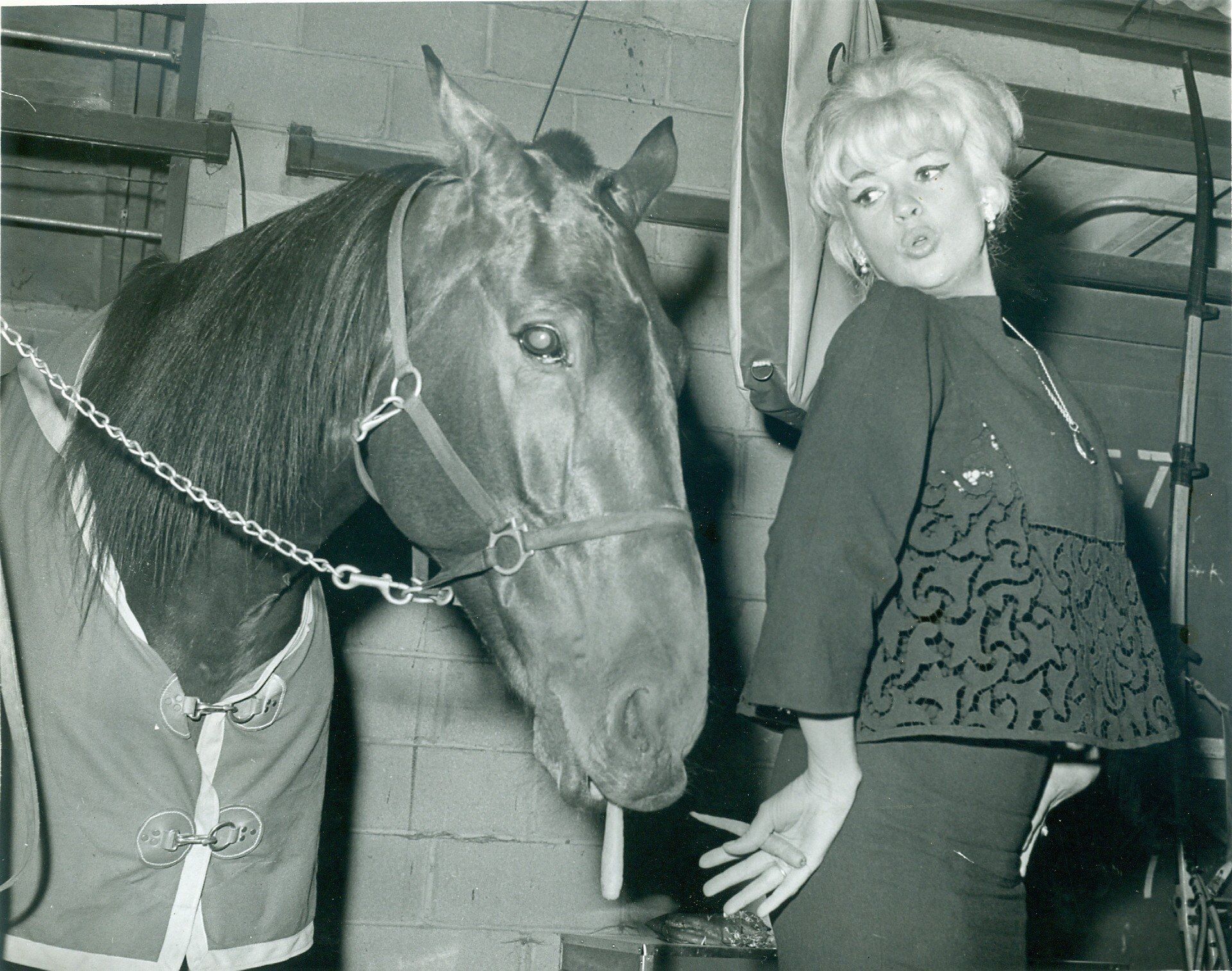
Joe and Cardy would make international news, appear on TV, pictured in numerous newspapers including the New York Times. There was even a photo of Cardy in there with Jayne Mansfield that caught my eye… several times.
He always described Cardy as “class” and was one of two horses that Joe had in the Hall of Fame, the other being Albatross.
“D’you have any in there?” he’d smile to bust me and take me down a notch after I won a race.
“Not yet” I’d shoot back at him as he’d grin and shake his head.
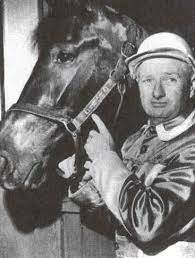
The summer of 1980 Joe O’Brien visited Cardigan Bay in New Zealand and Hoof Beats had a picture of him in the saddle on the 24-year-old Cardy, who had raced under saddle earlier in his career Down Under.
“The old horse looks good,” said Wideman back at the farm. Then he asked me if I was shipping up to Vernon (New York) to race. “If you are and see Joe, give him a message for me…”
I walked away shaking my head and thinking “now he wants me to talk trash with Joe O’Brien.”
I did get up to Vernon later that week and saw O’Brien in the paddock. I humbly said “Mr. O’Brien, Joe Wideman says ‘that’s the best mount you’ve had in a while.'”
O’Brien’s eyes lit up and he broke into a wide grin and asked about Joe. When I relayed his “he’s right too” answer to Wideman he got a good chuckle over that.
It was good to be able to connect three old friends from throughout the years. And a privilege to know three class acts.
One would think that a horse like Cardigan Bay would be a tough act to follow yet then came the Immortal Albatross.
But that is a story for a later time.
by Thom Pye, for Harnesslink
Thom Pye has been a groom, owner, trainer and driver for 50 plus years. He has also been a journalist, working for Hoof Beats, Harness Horse, Trot Magazine, and in 1989 was the founding associate editor and a columnist at Times: in Harness.

 USA
USA Canada
Canada Australia
Australia New Zealand
New Zealand Europe
Europe UK / IRE
UK / IRE



